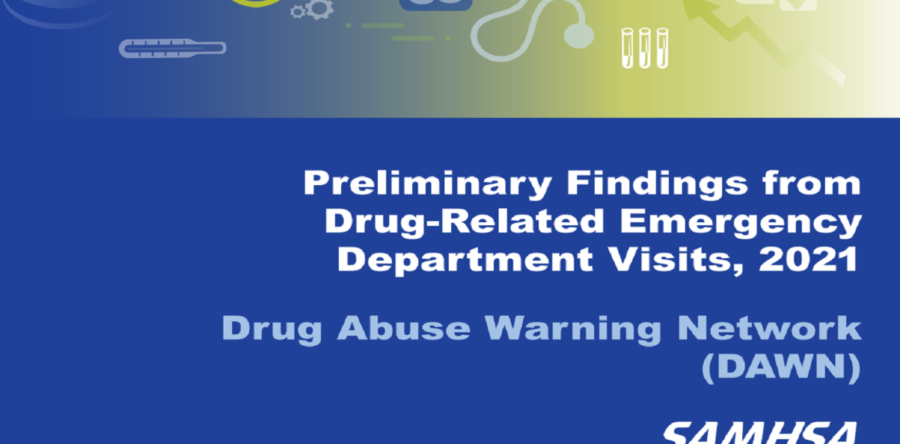Preliminary Findings from Drug-Related Emergency Department Visits, 2021: Results from the Drug Abuse Warning Network (DAWN)
A report of findings from drug-related emergency department visits was recently released through the Drug Abuse Warning Network (DAWN). DAWN is a nationwide public health surveillance system administered by the Substance Abuse and Mental Health Services Administration (SAMHSA) that improves Emergency Department (ED) monitoring of substance use-related visits, including those related to opioids. DAWN captures data on ED visits related to recent substance use and misuse directly from the electronic health records (EHR) of participating hospitals. It helps SAMHSA and public health professionals, clinicians, and policymakers respond effectively to the opioid and substance misuse crisis in the United States.
The key objectives of DAWN are to:
- Monitor demographic and geographic distribution, and identify trends of substance-related ED visits;
- Provide an early warning system that identifies emerging and novel psychoactive substances and/or combinations
- of substances; and
- Provide national estimates of substance-related ED visits to key stakeholders and the public.
Some Key Findings
- The top five drugs involved in drug-related ED visits in 2021 were alcohol (39.33% of all drug-related ED visits), opioids (14.07%), methamphetamine (11.02%), marijuana (10.78%), and cocaine (4.71%).
- Fentanyl-related ED visits rose throughout 2021.
- Patients aged 18 to 25 had the second highest percentage of ED visits related to marijuana (26.80%) and fentanyl (16.90%).
- Males had a higher percentage of ED visits for all top five drugs as compared to females, however, the difference was much smaller (54.04% males vs. 45.94% females) for ED visits related to other opioid pain medications and their combinations.
- Black or African American patients had the highest percentage of ED visits related to cocaine (44.19%), and the second highest percentage of ED visits related to marijuana (23.87%) and heroin (20.35%).
- More than one-third of ED visits related to fentanyl were from the West census region alone (39.65%). The West and South census regions combined accounted for more than two-thirds of ED visits related to methamphetamine (71.02%) and for the majority of visits related to other opioid pain medications and their combinations (59.51%).

